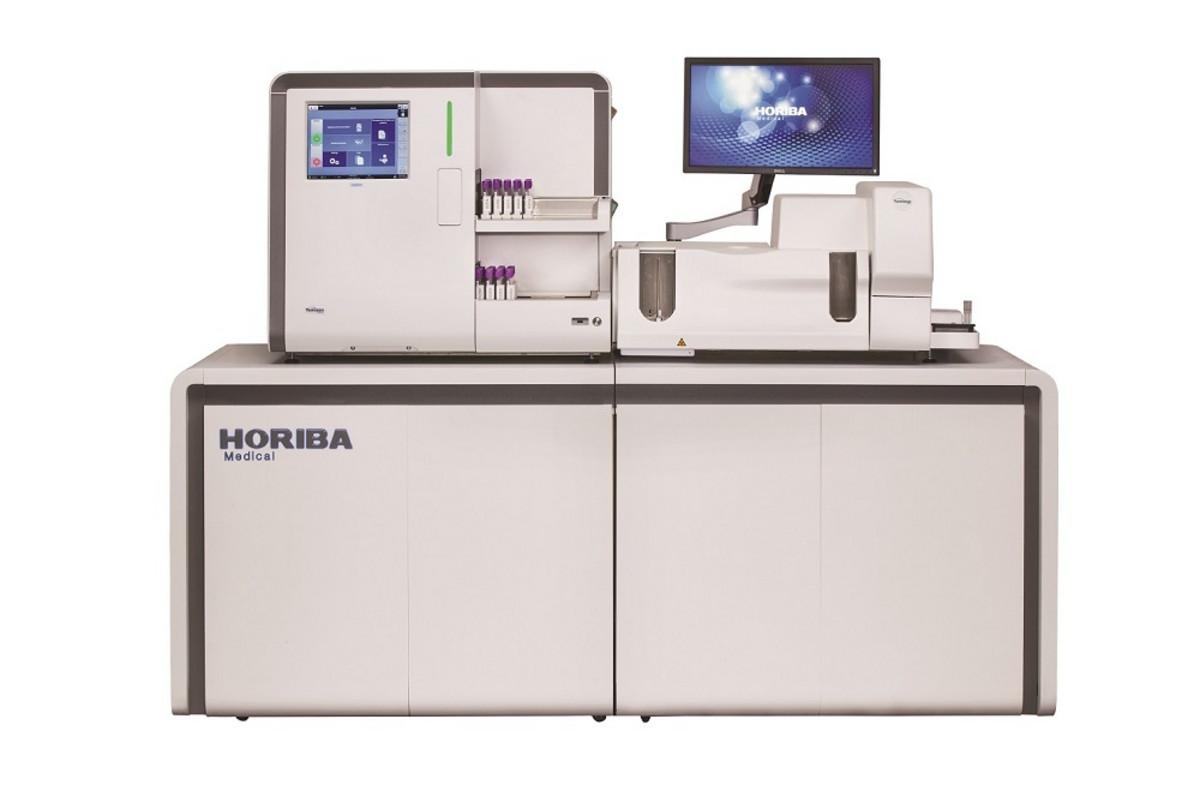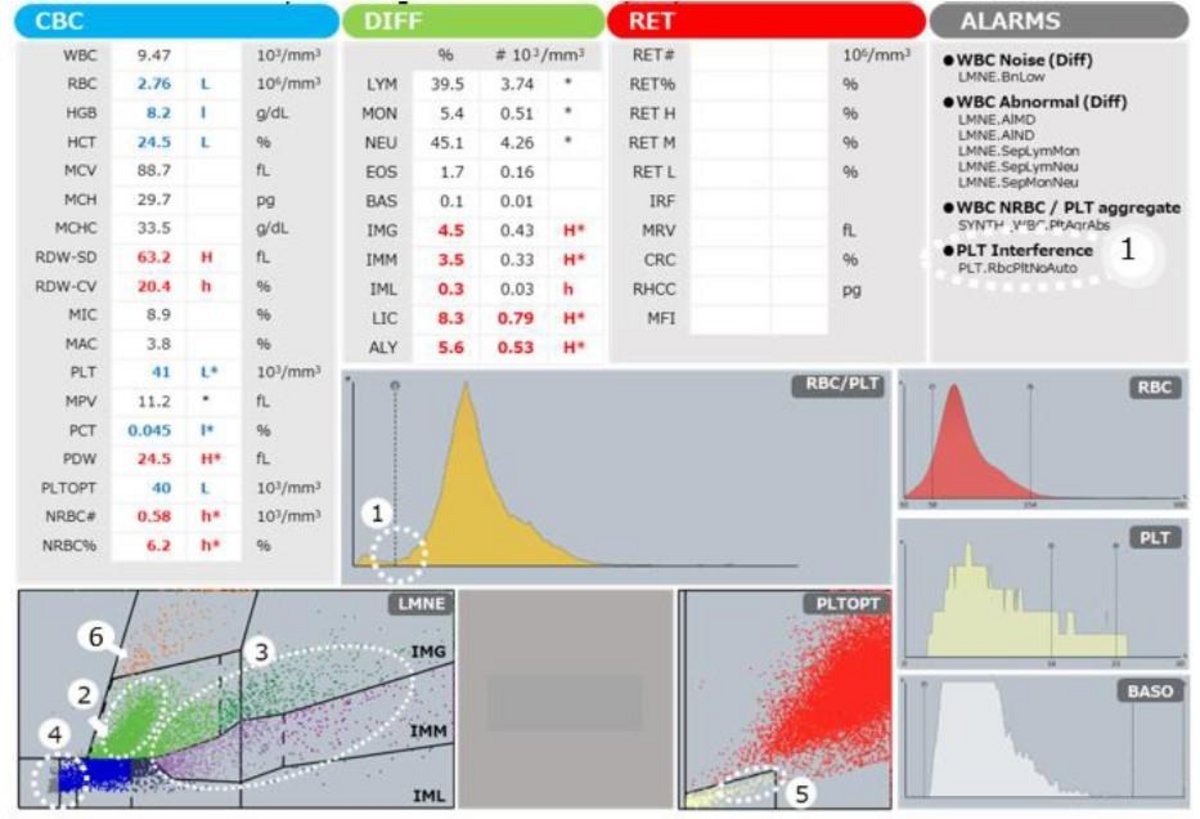
December 2021 (PDF for print)
Patient Demography: Male, 70’s, anemia
Diagnosis: Myelodysplastic Syndrome with Excess Blasts (MDS-EB-1)
Other Information: In peripheral blood - mature neutrophils (Band + Seg.) 60%, myelocytes 14%, blasts 2%, erythroblasts also present, blasts with high N/C ratio, delicate nuclear network structure and nucleoli. In addition, Pseudo-Pelger-Hu?t anomaly, neutrophil with hypogranularity, and giant platelets were also observed, but erythroblasts showed no megaloblastoid changes. In bone marrow aspirate - giant neutrophil with hypogranularity, binucleated erythroblasts, and micromegakaryocytes. We diagnosed MDS-EB-1 based on the percentage of blasts in the peripheral blood.
FBC results plus flagging/graphical indicators:
In addition to anemia and thrombocytopenia, the RDW-SD and RDW-CV were high, suggesting abnormalities in the size and morphology of erythrocytes. Raised Large Immature Cells (LIC), especially IMG and IMM, suggesting immature myeloid cells.
? 1. Not clearly separated, suggesting large platelets and schizocytes.
? 2. Neutrophil population.
? 3. Reduced optical absorbance, suggesting neutrophils with hypogranularity and/ or hyposegmentation.
? 4. Populations of large immature cells are seen across the IMG and IMM regions.
? 5. Population indicating the presence of erythroblasts.
? 6. Area suggesting the presence of giant platelets.
This clinical case is provided by Dr. Tohru Inaba, Dept. of Infection Control and Lab. Med., Kyoto Prefectural Univ. of Medicine.
如您有任何疑问,请在此留下详细需求或问题,我们将竭诚您服务。


